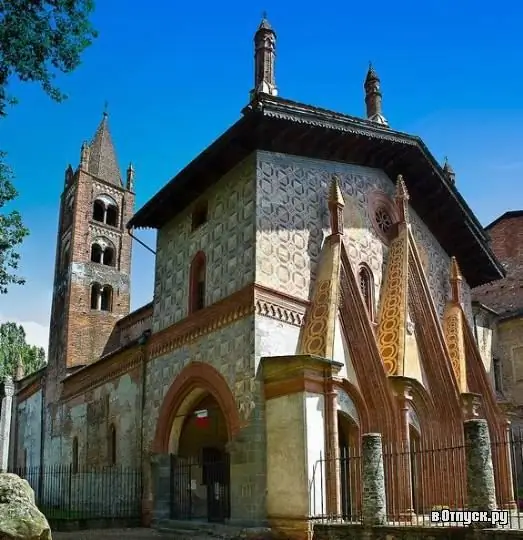
Description of the attraction
The Abbey of Sant Antoni di Ranverso is a religious complex located in the town of Buttiliera Alta in the Italian ski resort of Val di Susa. The abbey, also known as the Community of the Order of the Hospitallers, was founded in 1188 by order of Umberto III of Savoy and served as a resting place for pilgrims and a hospital for people affected by the so-called "Antonius Fire" - food toxicosis with ergot alkaloids. Well, when in the second half of the 14th century a great plague epidemic broke out, the abbey took over the care of the new sufferers. It is interesting that Saint Anthony was not chosen by chance as the patron saint of the monastery - he is usually depicted in the company with a small pig, and pork fat in those years was widely used to treat the plague and prevent the spread of the epidemic. In 1776, Pope Pius VI handed over Sant Antonio di Ranverso to the Order of Saints Mauritius and Lazarus, in whose jurisdiction it remains to this day.
During its long history, the complex has been rebuilt and modified several times. Initially, it included a hospital, from which only the facade, the monastery itself and the church have survived to this day. The latter, after the reconstruction of the 14-15th centuries, acquired its current Lombard-Gothic style. Next to the church is a 14th-century Gothic bell tower. The interior is decorated with numerous frescoes, some of which were painted in the early 15th century by Giacomo Jaquerino. His brush belongs to "Climbing Calvary" in the sacristy - a masterpiece of the artist. And the presbytery is decorated with a polyptych Defendente Ferrari. The ceiling of the church is covered with a baptismal vault, painted with scenes from the Old and New Testaments. In one of the crosshairs one can see the image of a circle with stars on a red and black background - this is a symbol of the Creation of the World. Another depicts an angel bringing the good news to the Virgin Mary. Two more crosshairs are decorated with a star against a dark background and a star against a light background, symbolizing, respectively, the death and resurrection of Christ. These drawings were made during the construction of the church, but the sun in the apse was painted much later, probably in the 17th century.






